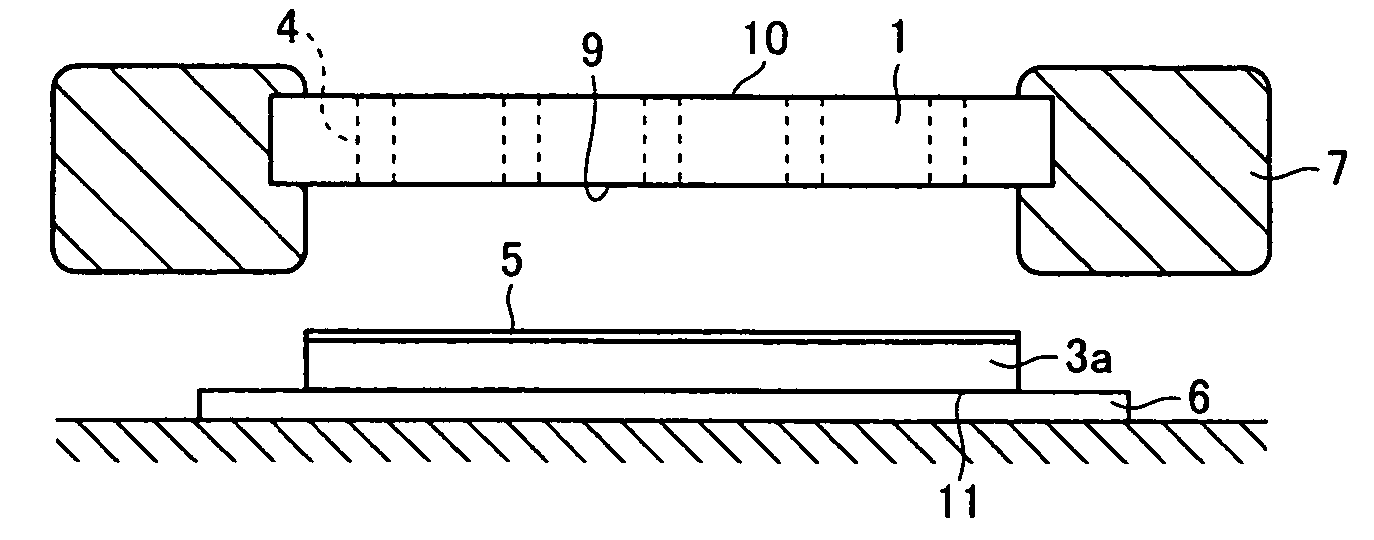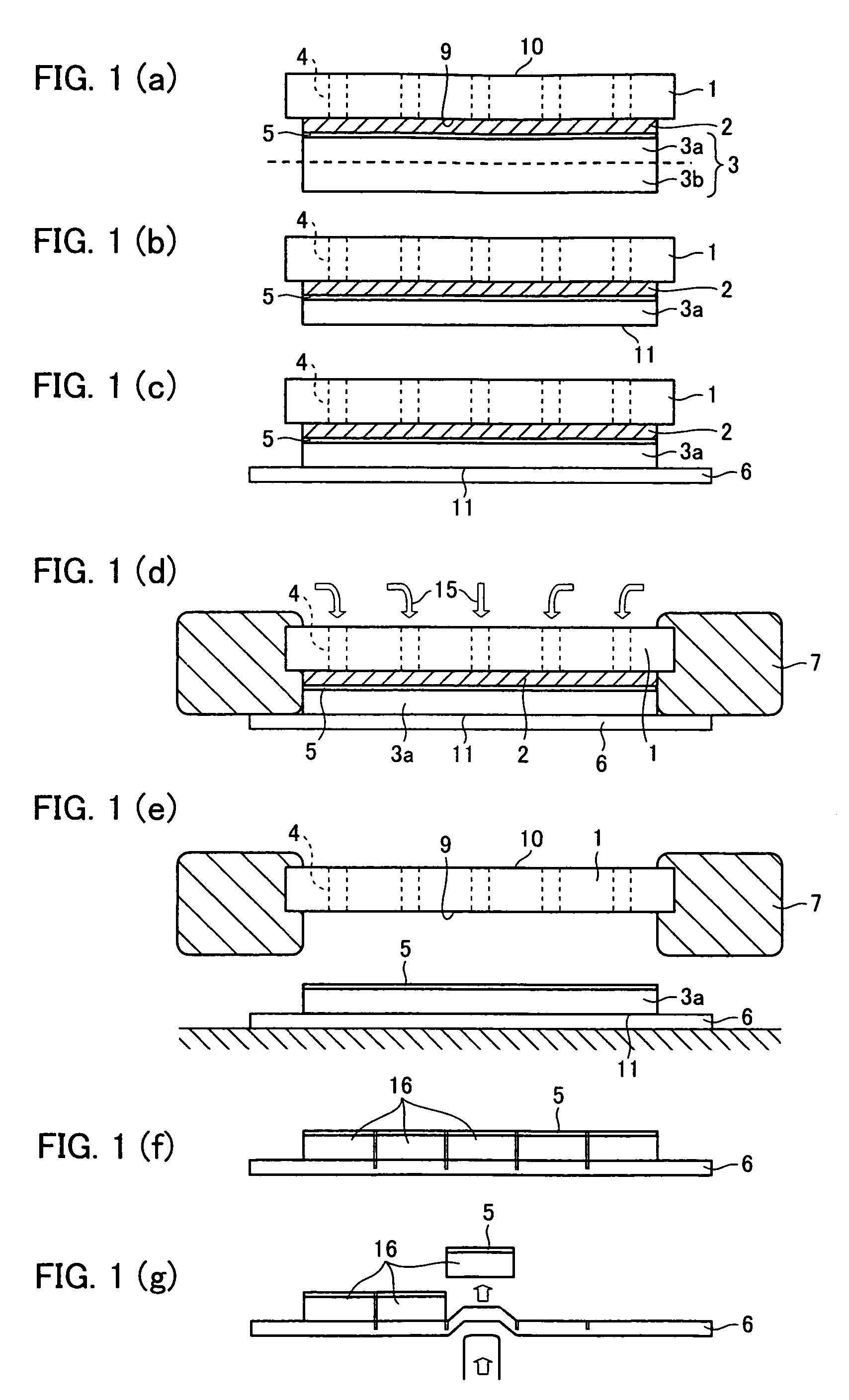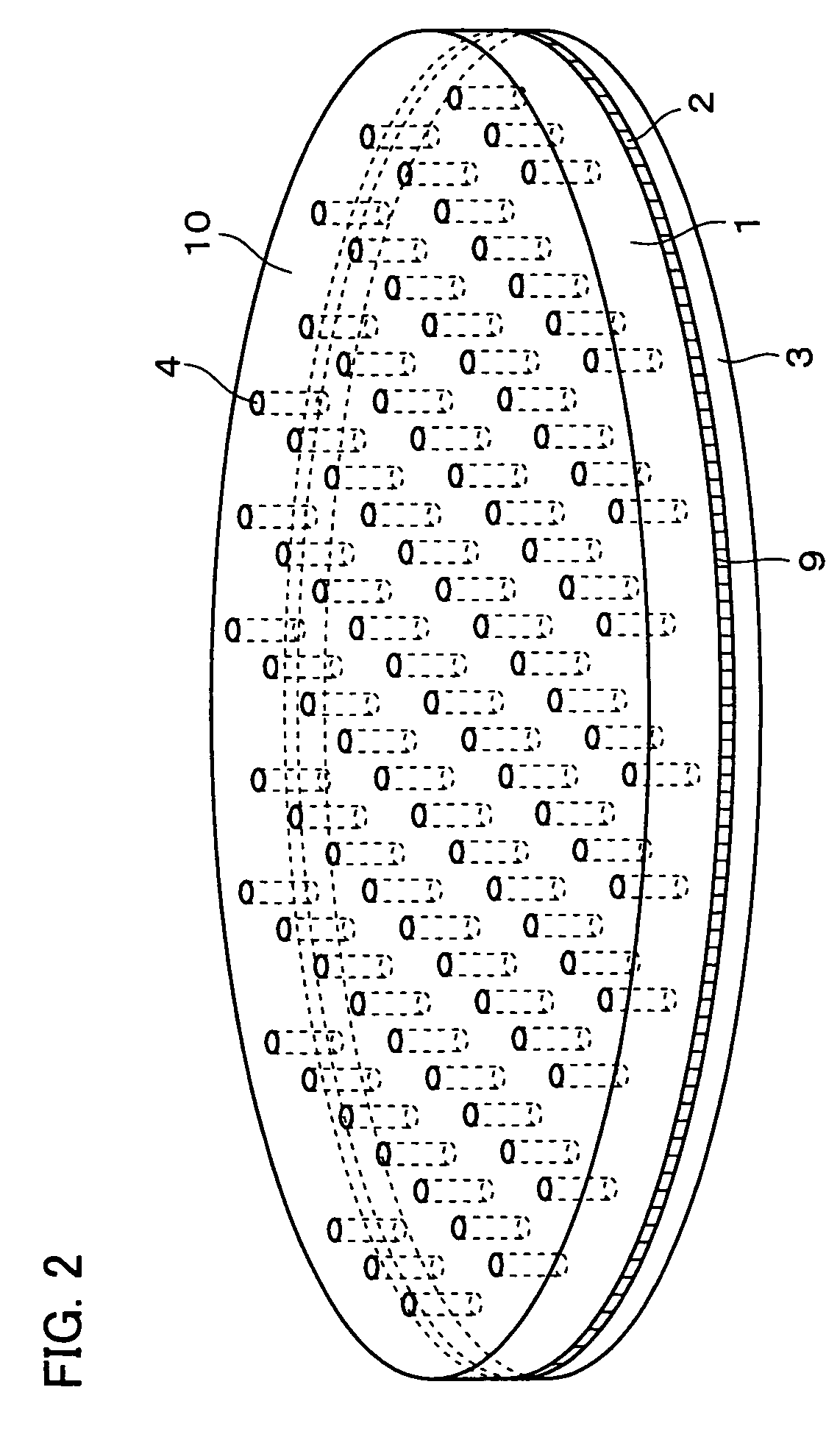Fabrication method of semiconductor device
a technology of semiconductor devices and fabrication methods, which is applied in the direction of semiconductor devices, semiconductor/solid-state device details, electrical devices, etc., can solve the problems of cracking in the semiconductor wafer, the adhesive sticking to the front surface of the semiconductor wafer cannot be completely removed, and the bending strength of the semiconductor wafer may be reduced
- Summary
- Abstract
- Description
- Claims
- Application Information
AI Technical Summary
Benefits of technology
Problems solved by technology
Method used
Image
Examples
first embodiment
[0039][First Embodiment]
[0040]Referring to FIGS. 1 (a) through 1(g), and FIG. 2, a First Embodiment of the present invention is described below.
[0041]The present embodiment provides the following five fabrication steps (Step 1 (S1) through Step 5 (S5)). In Step 1, a reinforcing plate 1 and a semiconductor wafer 3 (3a, 3b) are bonded with each other with an adhesive layer 2 interposed in between (reinforcing step, FIG. 1(a)). In Step 2, the semiconductor wafer 3b is ground (grinding step, FIG. 1(b)). In Step 3, a dicing tape 6 is attached on a back surface 11 of the semiconductor wafer 3a (bonding step, FIG. 1(c)). In step 4, a solvent 15 is injected through holes 4 of the reinforcing plate 1, so as tot separate the semiconductor wafer 3a from the reinforcing plate 1 (detaching step, FIGS. 1(d) and 1(e)). In step 5, the semiconductor wafer 3a is diced after it is separated from the reinforcing plate 1, and individual pieces of semiconductor device 16 are picked up (dicing step, FIGS....
second embodiment
[0052][Second Embodiment]
[0053]Referring to FIG. 3(a) through FIG. 3(g), and FIG. 4, a Second Embodiment of the present invention is described below. FIG. 3(a) through FIG. 3(g) illustrate fabrication steps of the present embodiment.
[0054]First, as illustrated in FIG. 3(a), a reinforcing plate 21 and a semiconductor wafer 3 (3a, 3b) are bonded with each other, with an adhesive layer 2 interposed in between (reinforcing step (S1)). A multiplicity of semiconductor devices (not shown) makes up a front surface 5 of the semiconductor wafer 3. The reinforcing plate 21 has a back surface 9 (facing the semiconductor wafer 3 via the adhesive layer 2) with narrow grooves 8, as illustrated in FIG. 4.
[0055]As shown in FIG. 4, the narrow grooves 8 are provided in the form of a lattice throughout the back surface 9 of the reinforcing plate 21. Each narrow groove 8 extends to the side surface of the reinforcing plate 21, and has ends 8a (on the side surface of the reinforcing plate 1) that constit...
PUM
 Login to View More
Login to View More Abstract
Description
Claims
Application Information
 Login to View More
Login to View More - R&D
- Intellectual Property
- Life Sciences
- Materials
- Tech Scout
- Unparalleled Data Quality
- Higher Quality Content
- 60% Fewer Hallucinations
Browse by: Latest US Patents, China's latest patents, Technical Efficacy Thesaurus, Application Domain, Technology Topic, Popular Technical Reports.
© 2025 PatSnap. All rights reserved.Legal|Privacy policy|Modern Slavery Act Transparency Statement|Sitemap|About US| Contact US: help@patsnap.com



